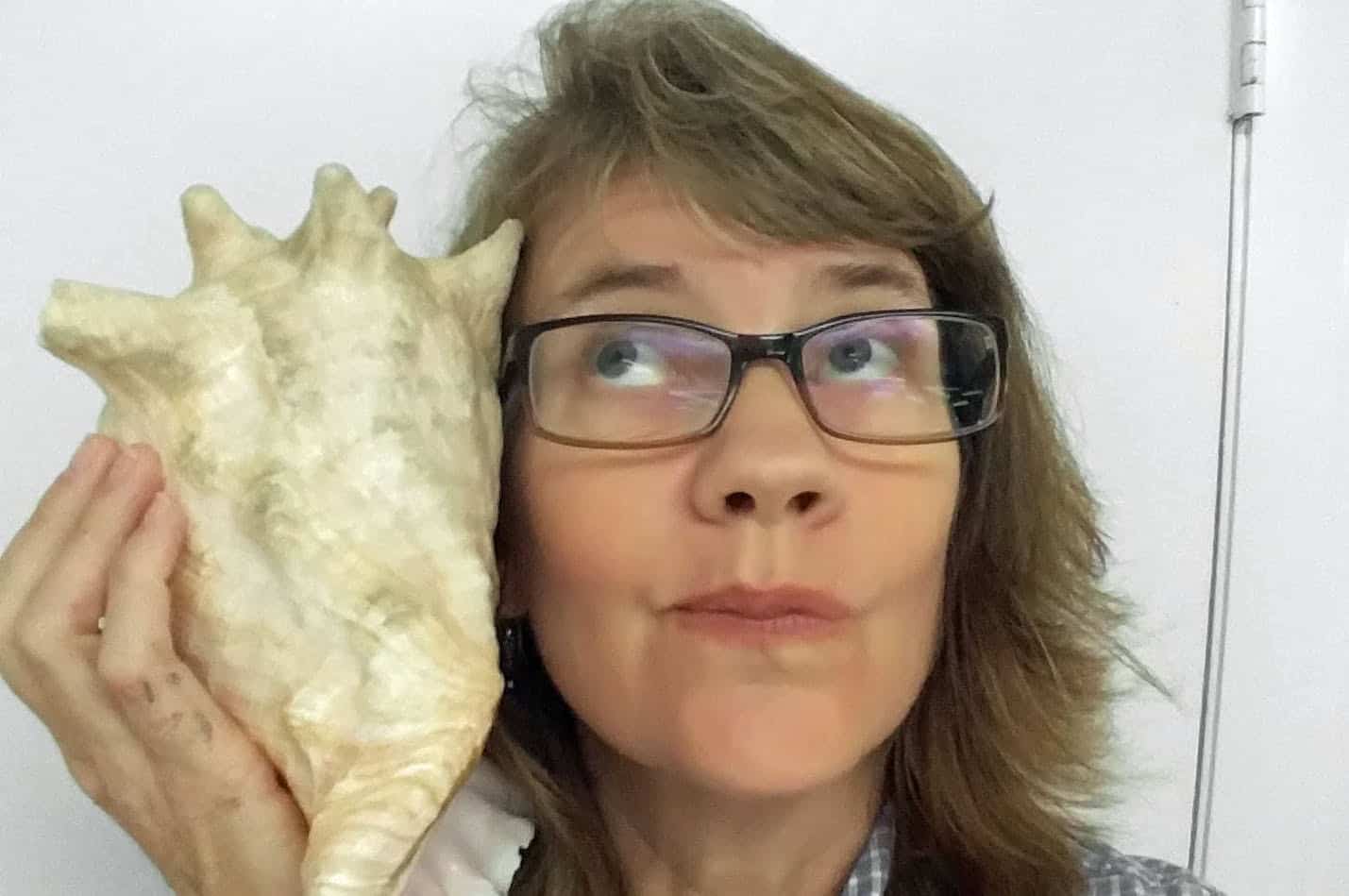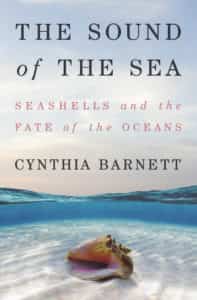Create
Shell game: Environmental author Cynthia Barnett goes beachcombing

Cynthia Barnett held a seashell to her ear … and it told her to get busy and write another book.
Barnett, the award-winning environmental journalist and author of three volumes about water and its crucial role in the life cycle of every living thing, has just published The Sound of the Sea: Seashells and the Fate of the Oceans.
Like her previous, highly lauded works (Rain: A Natural and Cultural History was longlisted for the National Book Award and a finalist for the 2016 PEN/E.O. Wilson Literary Science Writing Award), Barnett’s new one is that rare bird, a scientific page-turner.
It’s a seamless narrative tying together the importance of shells, as canaries in the coalmine of global warming and other life-threatening issues, the history of human fascination with them (as currency, as jewelry and decoration and as food and consumptive aids) and the natural history of the living organisms that create them.
Barnett will give a talk and sign The Sound of the Sea Sunday (July 11) at 4 p.m. at Tampa Bay Watch, 3000 Pinellas Bayway South, Tierra Verde. It’s free, but reservations are required (here).
On July 20, Tombolo Books sponsors a virtual conversation with Barnett and Jack Davis, Pulitzer Prize-winning author of The Gulf. Register here.
St. Pete Catalyst: It seems to me that the best nonfiction writing, especially when it comes to natural history, is a really exquisite blend of science and wonder … the genius twist, if you will, is when the writer says ‘Come on this trip with me … let me tell you a story.”
Cynthia Barnett: Yes! That’s exactly the sweet spot. And that’s what I thought I would do. And my mistake was thinking that this was going to be my easiest book. I thought “Wow, I’m writing about an animal that builds shells. That’ll be easier than explaining the water cycle.” And it turned out to be, by far, my most challenging book, because I hadn’t written about wild animals before. And it’s not just one animal, it’s like 50,000 marine mollusks are known, but they think that’s only a third of those that are out there living in the seas.
And the other thing that I really tried to do was bring in the human story. I think the sweet spot is the humanity, the wonder and the science all blended together.
I open the book with Neanderthals searching for seashells along what is now the Mediterranean coast. Another thing I didn’t realize is that ancient people, and even pre-humans, they had some notions of beauty and love for seashells. Anthropologists and archaeologists know this because they can tell when people gathered an empty shell versus when they gathered it for food.
The other metaphor is listening. People always loved trying to listen to seashells. And the amazing thing is how often they led to truth. So in the past, they provided evidence of evolution and extinction, when those concepts seemed unreal, and today they really are sentinels revealing the chemical changes and warming, and other human impacts to the ocean.
How did this particular natural history story get your attention in the first place?
For me, this sort of completes the water cycle. I like the sense of completion, that I’ve gone from fresh water to the atmosphere to the oceans. I had been invited to this lovely little shell museum in Sanibel to give a book talk. And from the director I learned an absolutely stunning statistic: They had done surveys of visitors to see what people already knew about shells. And the survey revealed that ninety percent of visitors did not know that a seashell was made by a living animal. Most people thought they were some kind of a stone or rock.
Was that a lightbulb moment for you?
Oh my gosh, that was it. I was floored, and it also bothered me. And I just couldn’t stop thinking about it. That night, I knew I was going to write this book. Most of the respondents were children, but still, children not understanding that a seashell is made by a living animal is to me a good metaphor for what’s happening, for people’s understanding of the ocean.
We love the ocean as a beautiful backdrop of life, or the postcard of life, without really understanding that it’s the source of life.
Can you explain, simply, why seashells are the canary in the coalmine for unnatural evolution?
Sure. The marine mollusks use the minerals in the surrounding sea to build their shells. And their primary ingredient is calcium carbonate. The carbon dioxide we send into the atmosphere by burning fossil fuels has turned seawater about thirty percent more acidic than it was at the start of the industrial era. And this chemical change in the ocean has begun to limit the carbonate the mollusks use to make their shells.
Meanwhile, acidic waters are also boring into some shells, pitting or eroding them. And that’s something I think people can really relate to – when they look at the ocean they can’t see those chemical changes. But if you understand it as acidification, or dissolution, it’s a bit easier to understand.
Some parts of the ocean have already become too warm for the shell-making animals. I don’t want this to sound took dark, because the other side of this is just how incredible it is that the oceans have protected us to the extent that they have. The oceans have absorbed almost all the excess heat trapped in the atmosphere. So in other words, the animals that live in the oceans have been experiencing this warming, and this acidification, for far longer than we have been feeling it.
So are we doomed? What’s the endgame to all of this?
The other wonderful thing about the story of mollusks is that they’ve survived for five hundred million years. They’re incredible survivors. And those that are with us now come from animals that actually survived five mass extinctions previously, including extraordinary warming and acidification. And in fact some of them are already beginning to adapt to the acidifying seas.
They are ambassadors for the ocean, but they also offer great hope for the ocean. And there is a lot of hope in this book. I admit that it’s got its dark parts, but ultimately the ocean is really a fount of hope for climate change.
RELATED PODCAST: Craig Pittman talks with Cynthia Barnett on Welcome to Florida








